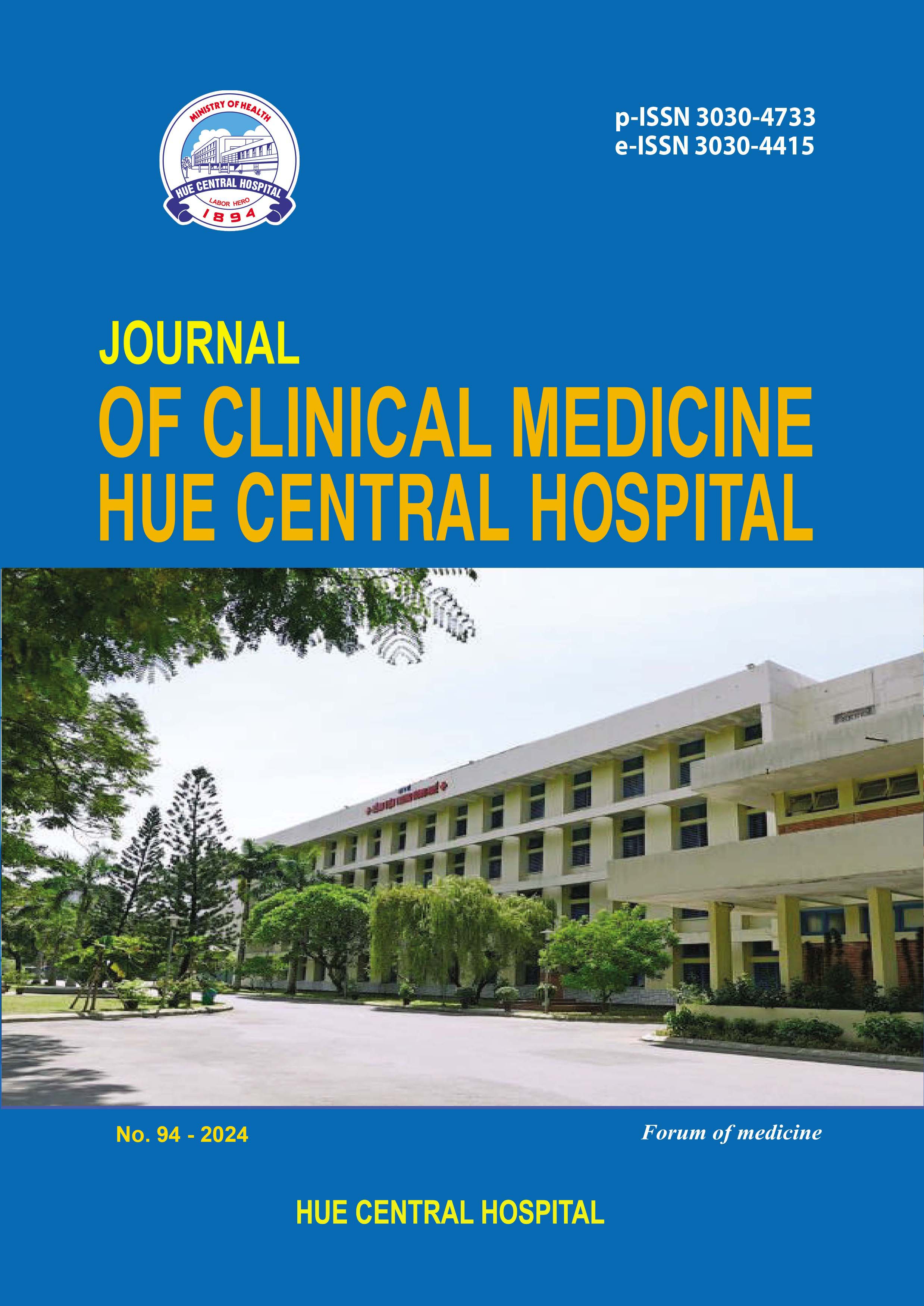Abstract
Objective: To survey the risk of cardiovascular disease using the SCORE2 and SCORE2-OP scores in hypertensive patients according to the recommendations of the European Society of Cardiology 2021 and evaluate the relationship between some risk factors in patients. hypertension with cardiovascular risk stratification according to the SCORE2 and SCORE2-OP scales.
Methods: Cross - sectional descriptive study on 141 patients aged 40 - 89 years old diagnosed with hypertension who treated at the Department of Cardiology - Hospital of Hue University of Medicine and Pharmacy during the period from January February 2022 to May 2023.
Results: The average age of the study sample was 67.9 ± 10.9 years old. The estimated cardiovascular risk score according to the SCORE2 and SCORE2-OP scales has a median of 15.0%. The very high cardiovascular risk group accounts for the highest proportion with 64.5%, followed by the high and low - moderate risk groups with 22.0% and 13.5%, respectively. The rate of very high cardiovascular risk in men (80.4%) was significantly higher than in women (50.6%), p < 0.05. Similarly, this rate in the smoking group (84.4%) was significantly higher than the non - smoking group (58.7%), and the group with HDL-C reduction (83.3%) was higher than the group without HDL-C reduction (59.5%), p < 0.05. Cardiovascular risk in the age groups 50 - 69 and ≥ 70 was mostly in the very high and high groups (79.1% and 100% respectively). Meanwhile, the main cardiovascular risk in the group < 50 years old was low - moderate risk (55.6%). The difference in cardiovascular risk stratification according to age groups is statistically significant (p < 0.05).
Conclusion: Hypertensive patients with very high cardiovascular risk stratification according to the SCORE2 and SCORE2-OP scales are the majority. The group of male patients, age > 50, smokers, and reduced HDL-C have a higher cardiovascular risk.
References
Mariachiara DC, Honor B, Thomas G, World Heart Report 2023: Confronting the World’s Number One Kille. 2023, Geneva, Switzerland: World Heart Federation (WHF).
Yusuf S, Hawken S, Ounpuu S, a. Effect of potentially modifiable risk factors associated with myocardial infarction in 52 countries (the INTERHEART study): casecontrol study. Lancet. 2004;364(9438):937-952.
Visseren FLJ, Mach F, Smulders YM, Carballo D. 2021 ESC Guidelines on cardiovascular disease prevention in clinical practice. Eur Heart J. 2021;42(34):3227-3337.
Hội Tim mạch học Việt Nam. Khuyến cáo về dự phòng bệnh lý tim mạch trong thực hành lâm sàng. 2022.
Csenteri O, Jancsó Z, Szöllösi GJ, Andréka P. Differences of cardiovascular risk assessment in clinical practice using SCORE and SCORE2. Open Heart. 2022;9(1):e002087.
Zujie G, Zengsheng C, Anqiang S. Gender differences in cardiovascular disease. Medicine in Novel Technology and Devices. 2019;4(2):100025.
Trần Thanh Truyền. Nghiên cứu các yếu tố nguy cơ tim mạch ở người >= 40 tuổi đến khám bệnh tại Bệnh viện đa khoa tỉnh Ninh Thuận, Luận văn chuyên khoa cấp II, Trường Đại học y Dược, Đại học Huế. 2018.
Mach F, Baigent C, Catapano AL. 2019 ESC/EAS Guidelines for the management of dyslipidaemias: lipid modification to reduce cardiovascular risk. Eur Heart J. 2020;41(1):111-188.
| Published | 28-12-2024 | |
| Fulltext |
|
|
| Language |
|
|
| Issue | No. 94 (2024) | |
| Section | Original article | |
| DOI | 10.38103/jcmhch.94.10 | |
| Keywords | Bệnh tim mạch, tăng huyết áp, các yếu tố nguy cơ tim mạch, thang điểm SCORE2 và SCORE2-OP Cardiovascular disease, hypertension, cardiovascular risk factors, SCORE2 and SCORE2-OP scores |

This work is licensed under a Creative Commons Attribution-NonCommercial-NoDerivatives 4.0 International License.
Copyright (c) 2024 Journal of Clinical Medicine Hue Central Hospital

